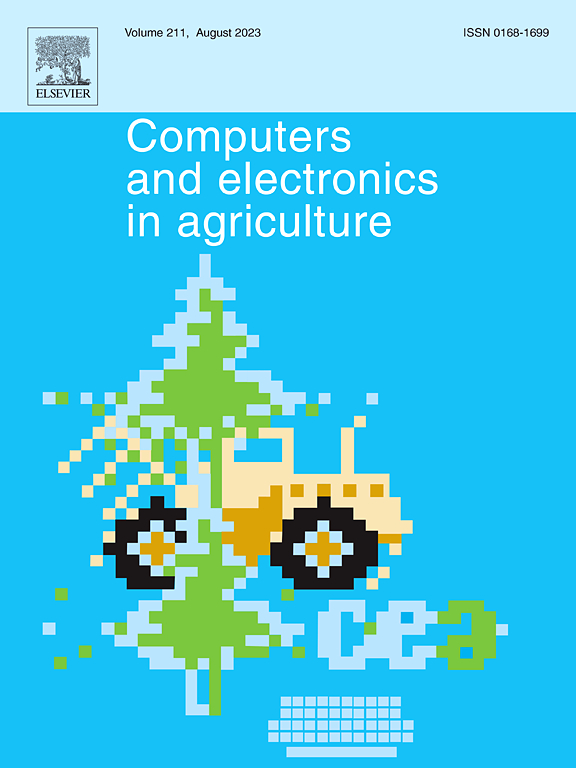Analysis of mixing liquid amendments by rotary tillage using discrete element modelling and digital image processing
IF 7.7
1区 农林科学
Q1 AGRICULTURE, MULTIDISCIPLINARY
引用次数: 0
Abstract
The application of organic amendments is considered a green and sustainable method to make up for the loss of organic matter in cultivated soils, where the soil heterogeneity due to the uneven spatial distribution of organic amendments in the soil should not be ignored. This study used brilliant blue stains to trace the liquid amendments in the application of liquid amendments (ALA). A total of 22 digital images of vertical profiles were used to quantify the distribution of amendments for the experiment. Simulations replicated the ALA by the discrete element method (DEM), where 22 sliced subspaces of the same size as the experimental condition were used to quantify the distribution of the simulated amendments. Each sliced subspace was further divided into 100 minimal subspaces, and it was calculated by an amendment mixing index (AMI) which was a normalized index given a sign. The results showed that the simulation accurately reproduces the AMIs in the sliced subspaces with an average relative error of 1.25 % to 23.79 %. The AMI assigned to the symbol reflects the mixing of liquid amendments in the minimal subspace. An approach based on digital image processing and an approach based on DEM simulation that could be used to analyze the mixing of liquid amendments quantitatively has been developed. They can visually characterize the mixing of liquid amendments.

利用离散元建模和数字图像处理技术分析旋耕机混合液的变化
有机改良剂的应用被认为是弥补耕地土壤有机质流失的一种绿色、可持续的方法,其中土壤中有机改良剂的空间分布不均匀所导致的土壤异质性不容忽视。本研究使用亮蓝色染色剂对液体改进剂(ALA)的应用进行追踪。共使用了22张垂直剖面的数字图像来量化实验中修正的分布。采用离散元法(DEM)模拟ALA,采用22个与实验条件相同大小的切片子空间来量化模拟修正的分布。每个切片子空间进一步划分为100个最小子空间,并通过修正混合指数(AMI)计算,修正混合指数是给定符号的归一化指数。结果表明,仿真能较准确地再现切片子空间中的ami,平均相对误差为1.25% ~ 23.79%。分配给符号的AMI反映了最小子空间中液体修正的混合。提出了一种基于数字图像处理和基于DEM模拟的液体修正剂混合定量分析方法。它们可以直观地表征液体改进剂的混合。
本文章由计算机程序翻译,如有差异,请以英文原文为准。
求助全文
约1分钟内获得全文
求助全文
来源期刊

Computers and Electronics in Agriculture
工程技术-计算机:跨学科应用
CiteScore
15.30
自引率
14.50%
发文量
800
审稿时长
62 days
期刊介绍:
Computers and Electronics in Agriculture provides international coverage of advancements in computer hardware, software, electronic instrumentation, and control systems applied to agricultural challenges. Encompassing agronomy, horticulture, forestry, aquaculture, and animal farming, the journal publishes original papers, reviews, and applications notes. It explores the use of computers and electronics in plant or animal agricultural production, covering topics like agricultural soils, water, pests, controlled environments, and waste. The scope extends to on-farm post-harvest operations and relevant technologies, including artificial intelligence, sensors, machine vision, robotics, networking, and simulation modeling. Its companion journal, Smart Agricultural Technology, continues the focus on smart applications in production agriculture.
 求助内容:
求助内容: 应助结果提醒方式:
应助结果提醒方式:


